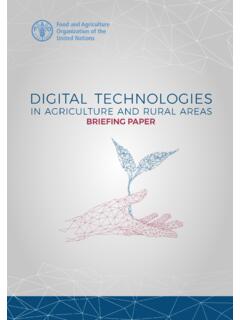Transcription of Summary Diffusion Theory - University of Notre Dame
1 This work is licensed under the Creative Commons Attribution-Noncommercial-No Derivative Works Australia License. To view a copy of this license visit Attribution should be made to Les Robinson . Les Robinson | Phone 0414 674 676 | Email Web | Blog A Summary of Diffusion of Innovations Les Robinson Fully revised and rewritten Jan 2009 Diffusion of Innovations seeks to explain how innovations are taken up in a population. An innovation is an idea, behaviour, or object that is perceived as new by its audience.
2 Diffusion of Innovations offers three valuable insights into the process of social change: - What qualities make an innovation spread successfully. - The importance of peer-peer conversations and peer networks. - Understanding the needs of different user segments. These insights have been tested in more than 6000 research studies and field tests, so they are amongst the most reliable in the social sciences. What qualities make innovations spread? Diffusion of Innovations takes a radically different approach to most other theories of change.
3 Instead of focusing on persuading individuals to change, it sees change as being primarily about the evolution or reinvention of products and behaviours so they become better fits for the needs of individuals and groups. In Diffusion of Innovations it is not people who change, but the innovations themselves. Why do certain innovations spread more quickly than others? And why do others fail? Diffusion scholars recognise five qualities that determine the success of an innovation . Understanding Diffusion of Innovations 2 1) Relative advantage This is the degree to which an innovation is perceived as better than the idea it supersedes by a particular group of users, measured in terms that matter to those users, like economic advantage, social prestige, convenience, or satisfaction.
4 The greater the perceived relative advantage of an innovation , the more rapid its rate of adoption is likely to be. There are no absolute rules for what constitutes relative advantage . It depends on the particular perceptions and needs of the user group.* 2) Compatibility with existing values and practices This is the degree to which an innovation is perceived as being consistent with the values, past experiences, and needs of potential adopters. An idea that is incompatible with their values, norms or practices will not be adopted as rapidly as an innovation that is compatible.
5 3) Simplicity and ease of use This is the degree to which an innovation is perceived as difficult to understand and use. New ideas that are simpler to understand are adopted more rapidly than innovations that require the adopter to develop new skills and understandings. 4) Trialability This is the degree to which an innovation can be experimented with on a limited basis. An innovation that is trialable represents less uncertainty to the individual who is considering it. 5) Observable results The easier it is for individuals to see the results of an innovation , the more likely they are to adopt it.
6 Visible results lower uncertainty and also stimulate peer discussion of a new idea, as friends and neighbours of an adopter often request information about it. According to Everett Rogers, these five qualities determine between 49 and 87 percent of the variation in the adoption of new products. 1 These five qualities make a valuable checklist to frame focus group discussions or project evaluations. They can help identify weaknesses to be addressed when improving products or behaviours. * I suspect, however, that three relative advantages are more influential than others: personal control, time saving and self-esteem.
7 See the paper at Understanding Diffusion of Innovations 3 Reinvention is a key principle in Diffusion of Innovations. The success of an innovation depends on how well it evolves to meet the needs of more and more demanding and risk-averse individuals in a population (the history of the mobile phone is a perfect example). A good way to achieve this is to make users into partners in a continuous process of redevelopment. Computer games companies, pharmaceutical corporations and rural research institutes are examples of organisations that seek to make users active partners in improving innovations by supporting user communities or by applying participative action research techniques.
8 Many computer games are now built with the intention that they will be modified by enthusiastic users. Says consumer behaviour expert, Francine Gardin. They re actually participating in the design of the game. These consumers are really passionate about the game it s almost like a cult. They have an incredible sense of loyalty and ownership of that brand. Instead of complaining, they fix the product. 2 The concept of reinvention is important because it tells us that no product or process can rest on it s laurels: continuous improvement is the key to spreading an innovation .
9 The importance of peer-peer conversations and peer networks The second important insight is that impersonal marketing methods like advertising and media stories may spread information about new innovations, but it s conversations that spread adoption. Why? Because the adoption of new products or behaviours involves the management of risk and uncertainty. It s usually only people we personally know and trust and who we know have successfully adopted the innovation themselves who can give us credible reassurances that our attempts to change won t result in embarrassment, humiliation, financial loss or wasted time.
10 Early adopters are the exception to this rule. They are on the lookout for advantages and tend to see the risks as low because they are financially more secure, more personally confident, and better informed about the particular product or behaviour. Often they will grasp at innovations on the basis of no more than a well worded news article. The rest of the population, however, see higher risks in change, and therefore require assurance from trusted peers that an innovation is do-able and provides genuine benefits. Understanding Diffusion of Innovations 4 As an innovation spreads from early adopters to majority audiences, face-to-face communication therefore becomes more essential to the decision to adopt.







